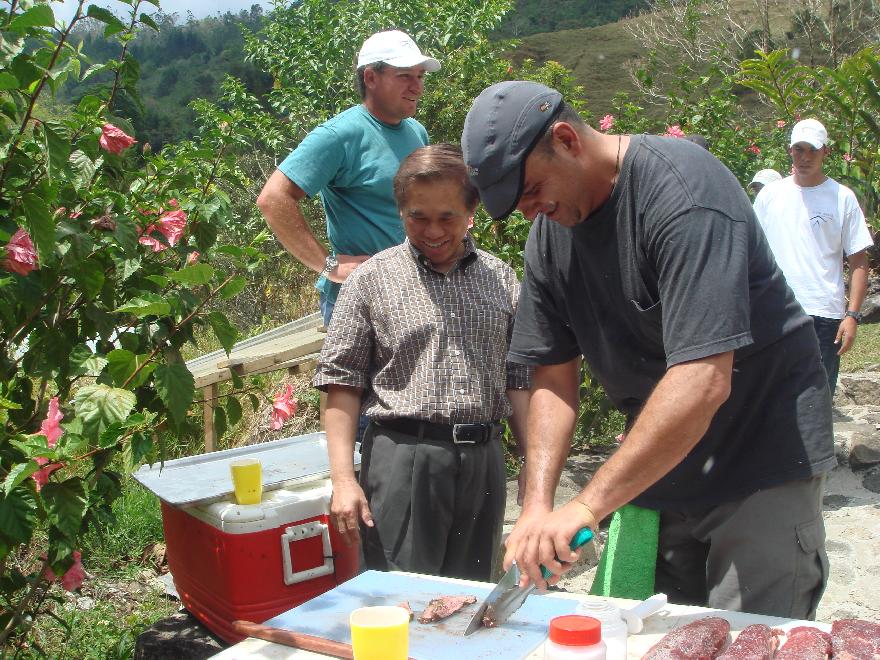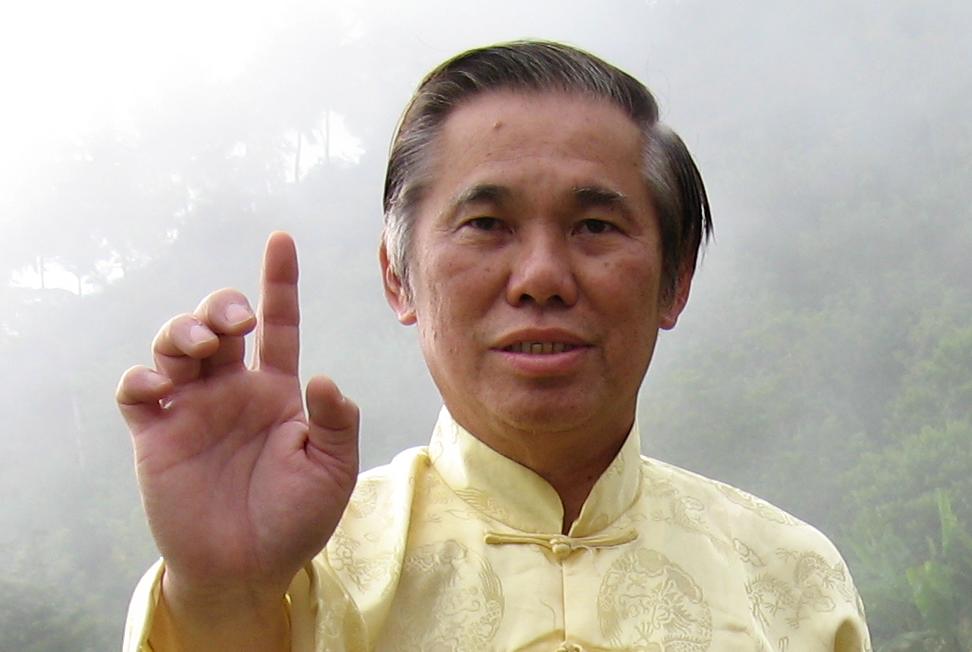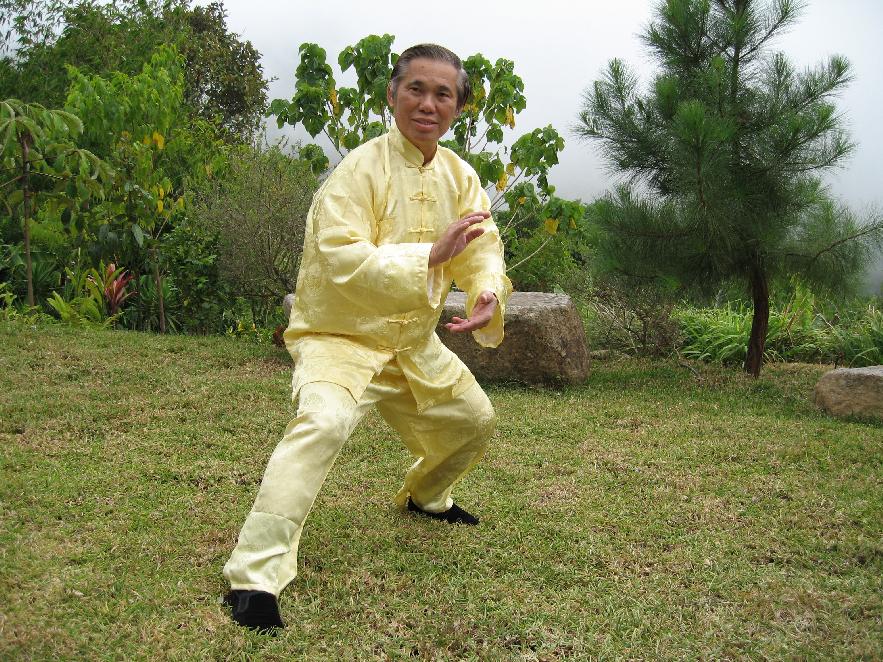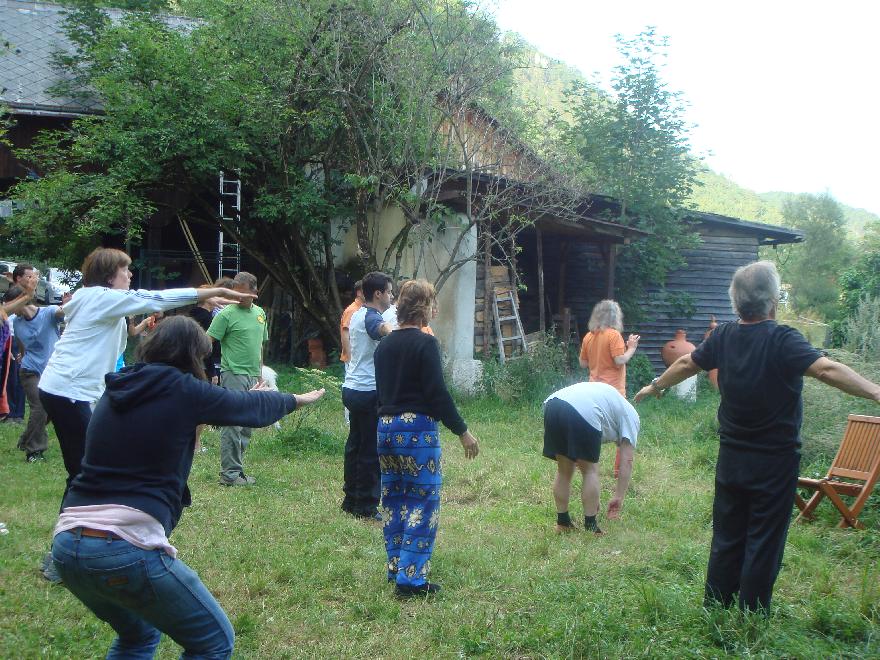SELECTION OF QUESTIONS AND ANSWERS
MAY 2010 PART 1

Yin-yang harmony, or balance, is very important in our training and in life. Sifu Piti, for example, is not only a top executive-trainer but also an excellent cook. Grandmaster Wong not only loves kungfu, he also loves good food.
Question 1
I first wanted to thank you from the bottom of my heart for your books. Very rarely can I honestly say that a book has changed the way I think and feel about my life, but ever since coming across your books ("The Art of Shaolin Kung Fu", "The Complete Book of Tai Chi Chuan", and "The Art of Chi Kung", especially), I have had a complete turn around in my way of thinking about the universe; from a completely materialistic "what is in front of me is all there is" to the idea that there can be something spiritual in my life. Your books have really inspired me to do my best to learn the skills you write about and to become a truly better and healthy person in body, mind, and spirit.
— Frederick, USA
Answer
I am very happy that you have found great benefits from my books.
Congratulations for your personal development. From thinking that the world is only materialistic to believing there is something spiritual in life is a great achievement. Once you can find spiritual comfort, you will never be lonely again, irrespective of whether you are in a crowded city or on a lonely island.
Question 2
I must confess to extreme frustration in my previous attempts to better myself. Trying to "be the best" in all sorts of different things I tried (such as in school, playing soccer, and playing other games with my friends) often led to too much stress and an eventual breakdown.
Answer
What you need is yin-yang harmony. While you strive to do your best, you must at the same time be relaxed. When you have attained your best, you must also be humble that there is still much more for you to learn. When you rejoice in your moment of success, you must be able to rise again if you fail.
You should not only aim at the destination but also enjoy the journey. You should not just celebrate the achievement but also cherish the effort.

One Finger Zen is a typical Shaolin symbol
Question 3
A few years ago, I took to studying Japanese martial arts, in particular Karate, to improve myself in body and mind, but even after many years of practice, while I was effective in implementing techniques, I was easily winded by merely ten minutes of sparring and was often using brute strength and tensed muscles and a tensed mind to implement my techniques.
Answer
When you plant an apple seed, you will get an apple tree. When you plant an orange seed, you will get an orange tree. Naturally when you practice Karate, you will get Karate results. Becoming winded after ten minutes of sparring, using brutal strength and tensed muscles and a tensed mind to implement techniques are what Karate practitioners typically do.
If you wish to spar for an hour or two without panting or feeling tired, be relaxed and yet very powerful, and use mental clarity to implement techniques as well as in your daily life, you must practice an art that gives these benefits.
Such an art is very rare, but we are proud that in Shaolin Wahnam we practice such an art in our Shaolin Kungfu and Wahnam Taijiquan. Understandably many people may find this is too good to be true, they do not believe such wonderful benefits are possible. What they believe or do not believe is their business, but literally thousands of our students are enjoying such benefits.
I would like to clarify that my statements are not meant to belittle Karate. Practicing Karate brings its own benefits, but they are not the type of benefits we in Shaolin Wahnam like. We prefer the type of benefits our Shaolin Kungfu and Wahnam Taijiquan give, just as Karate practitioners prefer the type of benefits Karate gives.
Question 4
Reading your books and learning about internal force was the "Aha!" moment. I had never trained in stances and did not even know how to begin.
Since "The Complete Book of Tai Chi Chuan" was the book I had access to at the time, I took to practicing the Three Circle Stance and Lifting Water everyday for a month. Imagine my surprise when I began feeling my body vibrating and being able to feel energy flowing through my body, both during the stance and feeling energy move my body in the standing meditation afterwards!
Answer
Congratulations. Considering that you practice from my books, you have done very well.
Practicing an internal exercise, like stance training, is scientific. If you follow the instructions correctly you will obtain the result the exercise is purported to give.
Then, why are there so many students not feel any internal force though they may have practiced stance training for many months? The answer is straight-forward. They have not practiced correctly. The most common mistake is that they do not relax enough.

In a way, Taijiquan may be regarded as a specialization of Shaolin Kungfu
Question 5
After really reading your book "The Art of Shaolin Kung Fu", I believe that my aims and objectives would be best met by training in Shaolin rather than Taijiquan. I wish to have a healthy body, to be able to defend myself and my loved ones, to develop the amazing skills you have written about (from the "invisible" skills of timing, spacing, and mental clarity to things such as having internal force, Tiger Claw, and One Finger Zen), and to be spiritually fulfilled.
Answer
Except for Tiger Claw and One Finger Zen, you can also obtain all the skills, abilities and benefits you have mentioned above by practicing Taijiquan correctly.
Tiger Claw and One Finger Zen are specialized Shaolin arts. Other specialized Shaolin arts include Iron Palm, Cosmos Palm, Eagle Claw, Iron Leg, Iron Shirt and Golden Bell amongst many others.
Taijiquan practitioners do not specialize as in Shaolin Kungfu. This does not mean that a palm strike by a Taijiquan practitioner is not as powerful as that of a Shaolin practitioner, but he normally just calls it a palm strike, or at the most a Taiji palm strike, and not Iron Palm, Cosmos Palm, Red Sand Palm or Cotton Palm as in Shaolin.
In a way Taijiquan may be regarded as a specialization of Shaolin Kungfu where practitioners specialize on the "softer" and internal aspects, whereas other practitioners specialize on other aspects, like Eagle Claw, Iron Palm, Monkey movements or kicking techniques.
Editorial Note: Federick's other questions will be posted in the
May 2010 Part 2
issue.
Question 6
I am very sad and desperate that I have a lumbar herniated disc, and it touches the sciatic nerve of my right leg. I am in an excruciating pain since 7 months ago. I try acupuncture, kinesiology and moxa but the pain remains.
Now I am with a friend who does osteopathy. The doctors told me that the only way I had was surgery but I know it has many risks. Can chi kung overcome my disc problem?
— Juan, Agentina
Answer
Yes, practicing chi kung or undergoing chi kung therapy can overcome your disc problem. But you have to learn high-level chi kung from a qualified teacher or undergo therapy from a qualified chi kung healer.
Unfortunately, much of chi kung practiced today is of a low level, or is just gentle physical exercise. Most people cannot tell the difference between high-level chi kung on one hand, and low-level chi kung or gentle physical exercise on the other. The crucial difference is that in high-level chi kung the practitioner is able to generate a powerful energy flow in a short time, like a few weeks, whereas in low-level chi kung or gentle physical exercise it takes a long time, like a few months or even years, and the energy flow generated is not powerful.
Many people with such a problem have it resolved after practicing chi kung learnt from us or after chi kung therapy by our chi kung healers. Please see our List of Certified Instructors and List of Ch Kung Healers for details. If you wish to learn from me, please e-mail my Secretary.

Shaolin Wahnam students practicing chi kung at a regional course in Austria. Most people are confused between chi kung and gentle phusical exercise.
Question 7
Did Wu Yu Xiang and Lok Ah Choy defeat many masters in combat during their lives? I have not found reports which say that these two masters fought a lot.
— Nicolas, France
Answer
There is no doubt that Lok Ah Choy was a great fighter. He was in the southern Shaolin Temple on the Nine-Lotus Mountain when Pak Mei led the Qing army to attack and burn it. Lok Ah Choy and a few great Shaolin disciples like the Venerable Sam Tuck, Hoong Hei Koon and Foong Sai Yoke fought their way out and escaped.
Unlike the other Shaolin disciples who were bent on revenge, Lok Ah Choy chose to lead a quiet life. In his later years, he taught Wong Kai Ying, the father of Wong Fei Hoong.
Wu Yu Xiang was a scholar-warrior, though I do not know much of his fighting. As he had learnt from the two greatest Taijiquan fighters of the time, Yang Lu Chan and Chen Jing Ping, it is reasonable to believe he was a great fighter too, though he might not have fought with many masters.
Question 8
Was it true that Pak Mei really existed and was he as good as we think?
Answer
I believe Pak Mei really existed. He was the Patriarch of three kungfu styles -- Pak Mei Kungfu, Ermei Kungfu and Dragon Style Kungfu.
Pak Mei was a kungfu genius and extremely good fighter, having mastered many arts like Golden Bell, Cosmos Palm, Cotton Art, Art of Childhood, Phoenix-Eye Fist and Dim Mark.
He killed the Venerable Chee Seen, the Abbot of the southern Shaolin Temple on the Nine-Lotus Mountain and First Patriarch of Southern Shaolin, in a duel during the burning of the temple. Much later, he was killed by the combined effort of Hoong Man Ting and Wu Ah Phiew who employed the Crane Style and the Tiger Style to avenge the burning of the Shaolin Temple and the death of their sigung (teacher's teacher), the Venerable Chee Seen.
LINKS
Selected Reading
- Learning the Forms of Siu Lin Tou
- Zen is Zen, Tao is Tao
- No Defence Direct Counter
- Taiji Staff
- I Laugh for the Future and for Life
